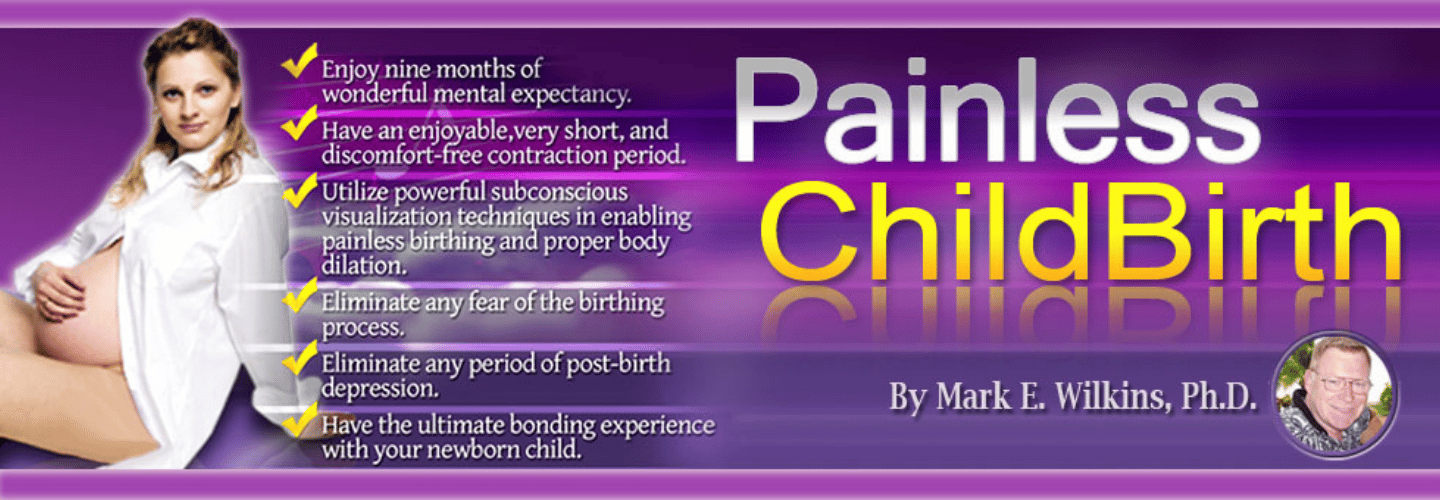
Embracing a serene and empowering birthing experience is a desire shared by many expectant parents. Hypnosis for a relaxing birth offers a unique approach that revolves around self-hypnosis, positivity, and visualization to alleviate fears and promote a smoother process. By learning to tap into the power of the mind, individuals can cultivate a sense of calm and confidence that is invaluable during childbirth. This method not only enhances relaxation but also contributes to improved pain management and an overall more positive journey into parenthood.
What Is Hypnobirthing?
Hypnobirthing, a method utilizing hypnosis techniques during labor, is designed to alleviate fear and anxiety, aiming to facilitate a more comfortable and empowering birthing experience for expectant mothers. This childbirth education program focuses on self-hypnosis techniques, relaxation, guided visualization, and positive affirmations.
The HypnoBirthing philosophy challenges the notion that childbirth has to be a painful and traumatic experience, preparing women for a positive birth experience instead. By incorporating controlled breathing and relaxation exercises, it helps women enter a state of deep relaxation, allowing their bodies to work more efficiently during labor.
This approach not only promotes natural pain relief but also aims for shorter and more comfortable labors with reduced interventions. Through the power of the mind-body connection, HypnoBirthing equips women with the tools to approach childbirth with confidence and a sense of empowerment.
Research studies by Varner (2015) and Madden et al. (2016) further support the effectiveness of HypnoBirthing in promoting a positive birthing experience.
Benefits of HypnoBirthing
Discover the transformative benefits of HypnoBirthing, where pain management techniques, enhanced relaxation methods, and positive mindset reinforcement come together to redefine the birthing experience.
By utilizing these techniques, mothers may reduce the need for medical interventions and increase their chances of a natural birth.
Embracing the philosophy of a gentler, less painful childbirth can lead to a more positive emotional outlook and a sense of empowerment throughout the birthing journey.
Pain Management Techniques
Numerous studies have demonstrated the importance of utilizing self-hypnosis and relaxation techniques in childbirth to reduce perceived pain levels and enhance the birthing experience. HypnoBirthing techniques, such as self-hypnosis for labor and visualization techniques, play a significant role in pain management during natural birthing.
By incorporating positive affirmations and relaxation techniques, individuals can release fear and tension, creating a calmer environment for labor. This approach aims to manage pain naturally, potentially reducing the need for additional interventions.
Through relaxation, the body releases endorphins, which can effectively help in pain management during labor. Overall, utilizing hypnosis techniques in childbirth can lead to a more comfortable and controlled birthing experience, promoting a sense of empowerment and well-being.
Enhanced Relaxation Methods
Enhancing relaxation methods through the practice of HypnoBirthing offers expecting mothers a pathway to a calmer and more comfortable birthing experience. By incorporating HypnoBirthing techniques such as relaxation, visualization, and meditation, mothers can tap into their inner strength and approach childbirth with a positive mindset.
This approach focuses on releasing fears, trusting the birthing process, and fostering a gentle birth through relaxation practices. Using positive language and affirmations further enhances relaxation, easing the birthing journey. HypnoBirthing encourages subconscious awareness and visualizing positive birth scenarios to reduce fear and tension, ultimately empowering mothers to have a more joyful birth experience.
Positive Mindset Reinforcement
Promoting a positive outlook and mental resilience, HypnoBirthing serves as a transformative method that nurtures a mindset of empowerment and trust in the birthing process. Through HypnoBirthing classes, individuals learn relaxation techniques and self-hypnosis to reduce fear and anxiety surrounding childbirth.
By cultivating a positive outlook, expectant parents feel empowered and more in control of their childbirth experience. This approach challenges the common belief that labor must be painful, emphasizing a calmer and more empowering process. Studies indicate that practicing HypnoBirthing can lead to reduced intervention rates during labor, potentially lowering the need for medical interventions like C-sections.
HypnoBirthing Techniques
HypnoBirthing techniques encompass a range of practices such as breathing for relaxation, visualization during labor, and self-hypnosis. These methods aim to cultivate a serene birthing environment by promoting calmness and trust in the body's innate birthing capabilities.
Breathing for Relaxation
Incorporating mindful breathing techniques is a fundamental aspect of preparing for a calm and relaxed birthing experience using HypnoBirthing methods. Here are some key points to keep in mind:
- HypnoBirthing techniques include specific breathing exercises to induce relaxation during labor.
- Controlled breathing helps reduce tension and promotes a calm state of mind for the birthing person.
- Deep breathing techniques in HypnoBirthing aim to regulate the body's response to labor pain.
- Proper breathing techniques in HypnoBirthing can assist in managing discomfort and promoting a smoother birthing process.
- Learning and practicing breathing techniques are essential components of HypnoBirthing for achieving a relaxed and comfortable birthing experience.
Visualization During Labor
During labor, the practice of visualization techniques can greatly enhance the birthing experience by fostering a sense of calm and empowerment.
Visualization during labor in HypnoBirthing involves creating mental images of a smooth and comfortable birthing process, helping individuals focus on positive outcomes and reducing fear, tension, and pain.
By visualizing a peaceful birth environment and the baby's progression, birthing individuals can promote relaxation, confidence, and a sense of control during childbirth.
This practice assists in maintaining a calm and positive mindset throughout labor, contributing to a more comfortable and empowering birthing experience.
Through visualization techniques, individuals can cultivate a mindset that supports a smoother labor process, enabling them to approach childbirth with greater confidence and assurance.
Self-Hypnosis Techniques
Visualization techniques during labor pave the way for individuals to smoothly shift into self-hypnosis techniques, fostering a state of deep relaxation and mental focus conducive to a calm and empowering birthing experience.
- Self-Hypnosis Techniques: Engage in deep relaxation and mental focus
- Reduce Fear and Pain: Alleviate anxiety and tension for a more comfortable birth
- Calm Birth Experience: Promote a serene and empowering mindset
- Positive Affirmations: Enhance confidence in the body's natural birthing abilities
- Controlled Breathing: Regulate responses, manage pain, and potentially shorten the birthing process
HypnoBirthing Tips
Practicing relaxation techniques is essential to mastering the art of HypnoBirthing for a calm and empowering birth experience. For birthing people seeking a natural and mindful approach to childbirth, incorporating self-hypnosis techniques can help reduce pain and promote relaxation. By combining elements of mindfulness, deep breathing, visualization, and positive affirmations, individuals can cultivate a positive mindset that aligns with the body's innate birthing abilities.
Utilizing self-hypnosis techniques during labor enables individuals to tap into their subconscious mind, allowing for a more tranquil and controlled birthing experience. Deep breathing exercises play a vital role in regulating the body's response to labor, helping to manage discomfort and promote a sense of calm. By focusing on positive language and affirmations, birthing people can enhance relaxation and trust in the natural process of childbirth.
Incorporating meditation and quick relaxation methods into HypnoBirthing practices can effectively reduce fear and tension, creating a more harmonious environment for both the birthing person and their baby. Embracing these tips can lead to a smoother and more empowering labor experience.
HypnoBirthing Classes

Enrolling in HypnoBirthing classes offers expectant parents a thorough and supportive environment to learn relaxation techniques and mindfulness practices for a more peaceful birthing experience.
- Natural Birth: Emphasizing a more natural approach to childbirth.
- Relaxation Techniques: Teaching methods to stay calm and relaxed during labor.
- Positive Affirmations: Using affirmations to maintain a positive mindset throughout the birthing process.
- Reduce Fear: Helping individuals address and reduce fears related to childbirth.
- Bonding with Baby: Encouraging bonding practices between parents and their newborn.
HypnoBirthing classes typically span 5 weeks and cover a range of techniques such as relaxation, visualization, deep breathing, and positive affirmations aimed at promoting a calmer birthing experience. The curriculum not only focuses on preparing the body for birth and quick relaxation methods but also includes techniques for bonding with the baby.
Hypnobirthing Vs Lamaze
Comparing the approaches of Hypnobirthing and Lamaze reveals distinct focuses on mental preparation and physical techniques for managing labor pain and promoting relaxation.
Hypnobirthing centers around self-hypnosis, relaxation, and visualization techniques to facilitate a more comfortable and easier labor experience. The emphasis is on reducing fear and tension during childbirth through mental preparation.
In contrast, Lamaze places a strong focus on the physical aspects of childbirth, incorporating breathing techniques to manage pain and promote relaxation. Lamaze aims to empower women through education and preparedness for labor and delivery.
Both methods have been studied for their effectiveness in reducing the need for interventions and fostering positive birth experiences. Choosing between Hypnobirthing and Lamaze ultimately depends on individual preferences regarding the emphasis on mental preparation, relaxation techniques, fear reduction, and empowerment during childbirth. Each approach offers unique benefits, catering to different aspects of the birthing experience.
Frequently Asked Questions
What Is the Hypnosis Birth Method?
The Hypnosis Birth Method involves utilizing hypnosis techniques to enhance the birthing experience. Through the power of the mind-body connection, this method promotes relaxation, reduces fear and anxiety, and manages pain naturally.
Key components include positive affirmations, visualization exercises, controlled breathing, and self-hypnosis. These techniques aim to create a calming environment, potentially leading to a shorter and more comfortable labor.
Studies suggest that hypnosis-based interventions can improve emotional outlook and instill a sense of control during childbirth.
Can Hypnosis Be Used During Childbirth?
Hypnosis can indeed be used during childbirth to assist with pain management, enhance the mind-body connection, and promote a positive birthing experience.
Through the use of techniques like positive affirmations, breathing exercises, and visualization, hypnosis can create a supportive environment for mental preparation.
This approach helps women stay calm, confident, and in control during labor, making the childbirth experience more manageable and empowering.
What Is the Difference Between Hypnobirth and Calmbirth?
Hypnobirth and Calmbirth differ primarily in their approaches to childbirth preparation.
Hypnobirth focuses on self-hypnosis, visualization, and affirmations to reframe perceptions of childbirth. It benefits include reduced fear and tension through hypnosis.
Calmbirth, on the other hand, emphasizes mindfulness, breathing techniques, and body connection for a calm birthing experience. Its techniques center around mindfulness and relaxation strategies to promote a positive labor experience.
Both methods highlight the mind-body connection during childbirth.
How Can I Stay Calm and Relaxed During Labor?
To stay calm and relaxed during labor, focus on deep breathing techniques, visualization exercises, and meditation practices. Utilize a strong support network to provide emotional reassurance.
Incorporate relaxation techniques such as positive affirmations and mindfulness to foster a mind-body connection. Engaging in these strategies can help create a state of calm and centeredness, empowering you to navigate the birthing process with a sense of control and tranquility.
Conclusion
To sum up, embracing the practice of hypnobirthing can lead to a more positive and empowering birthing experience for expectant parents.
By utilizing self-hypnosis, relaxation techniques, and positive affirmations, individuals can release fear and tension, promoting a smoother and more joyful childbirth journey.
Through the power of the mind and the practice of hypnobirthing, parents can approach birth with confidence and calm, ultimately enhancing their overall birthing experience.




